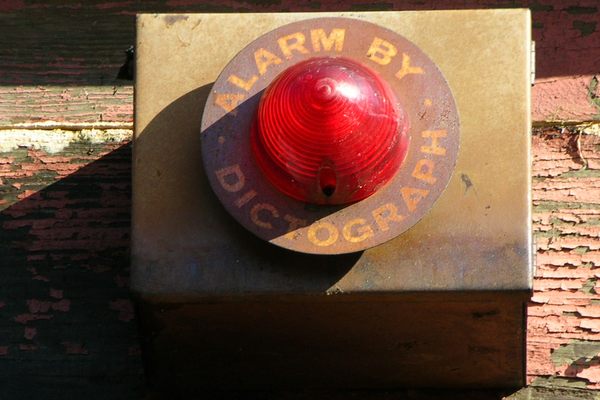The Animal Kingdom’s Oddest Ways of Handling Anxiety
From fainting goats to stackable toads, we all handle fear differently.

In 1646, scholar and polymath Athanasius Kircher took a break from inventing new projection devices and studying the blood of plague victims to try and hypnotize a chicken.
Kircher held a hen down on the ground, taking care to press firmly on her head. He waited for her to become still, and then drew a chalk line on the ground, extending from her beak off into the distance. When he backed away, he reported, she lay there, paralyzed—“as if, despairing of escape through the fruitlessness of her motions, she gave herself up to the will of her conquerer.” Kircher figured she thought the line was a string, and was acting as though she had been bound.
Now, thanks to our slightly improved understanding of chicken psychology, it’s clear that Kircher’s hen wasn’t roleplaying Fifty Shades of Grey— she was just super freaked out. This paralysis, which researchers now call “tonic immobility,” is a fear response, probably meant to help chickens and other animals “play dead” in the presence of threats. (The chalk line isn’t strictly necessary.) As the psychologist G.G. Gallup Jr. explained in a series of papers from the 1970s, chickens freeze for longer when exposed to loud noises, stuffed hawks, or other scary stimuli.

When it comes to over-the-top panic behavior, humans definitely win. But when faced with the many dangers of wild life, animal brains do strange stuff, too. Here are some of the weirdest fear responses in the natural world.
1. Stackable Toads
All different kinds of animals, from crayfish to rabbits, exhibit tonic immobility. Different physical orientations inspire the state—toads, for example, will conk out pretty easily when turned upside down. In the video above, a patient Australian man demonstrates a “simple three-toad stack that anybody can do at home,” carried out in his garage with a few unlucky cane toads. As soon as he flips them over, they go limp and cross their arms, as though preparing for their little toad coffins. Fun!
2. Freezing Goats
Goats are among the most exciteable of Earth’s creatures—one expert has attested that “it does not take much for them to scream bloody murder,” and the Greek god Pan, namesake of panic itself, was half-goat. To top it off, certain of them straight-up fall down when they get scared. These particular goats have a condition called myotonia congenita, which means it takes their muscles a while to relax after seizing up. Because fear involves rapid muscle clenching, they get frozen in position and keel over. Take a moment to study it further, in the video above.
3. “Dead” Opposums
When an opossum gets scared, it, too, keels over. But the possum fear response involves a little extra panache—it also gapes its mouth, drools excessively, and begins leaking smelly green fluid out of its butt. This is likely meant to make predators think it’s extra-dead, from some kind of foul disease. Next time you metaphorically “play possum” to get out of a tough situation, consider ramping it up a bit for accuracy.
4. Mutating Aphids
Fish, ants, and other animals that hang out in groups often warn each other about scary things by emitting “alarm pheremones”—smelly chemicals that mean “run!” The pea aphid, though, takes things one step further. When it gets a whiff of alarm pheremone, it not only takes off as fast as possible—if it survives, its offspring are more likely to be born with wings, enabling multigenerational escape. (The guy above didn’t make it.)
5. Chicken Chickens
Let’s finish this off with the classic choice. Kircher was far from the only person to make a hobby out of chicken fear—by the 19th century, The American Naturalist was calling chicken-hypnotizing “an experiment sufficiently familiar to all of us“—but despite its oversaturation, the pasttime has found popularity in every century. Hemingway shared his technique in The Dangerous Summer, and Iggy Pop sings about it in “Lust For Life,” just before insisting that he’s had it in the ear before. Comparatively, the people in the video above are just simple chicken-freezing folks. At least they wake their hen up again at the end.
Naturecultures is a weekly column that explores the changing relationships between humanity and wilder things. Have something you want covered (or uncovered)? Send tips to cara@atlasobscura.com.
















Follow us on Twitter to get the latest on the world's hidden wonders.
Like us on Facebook to get the latest on the world's hidden wonders.
Follow us on Twitter Like us on Facebook